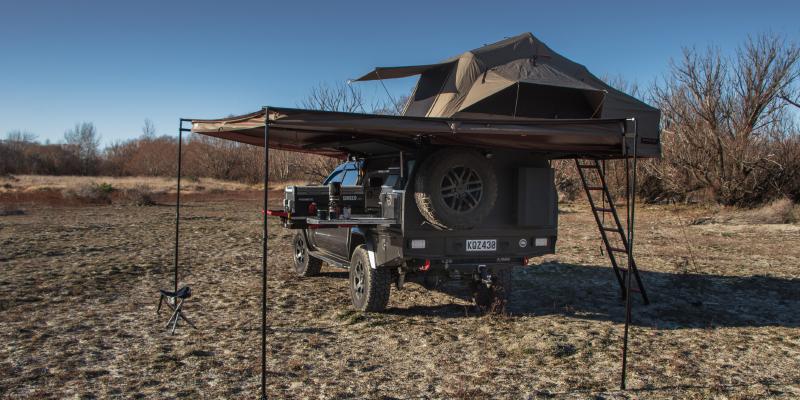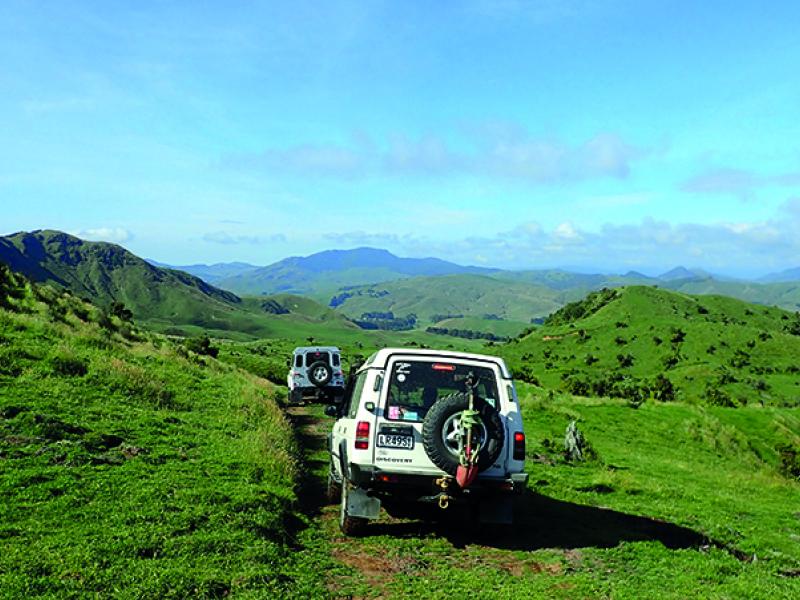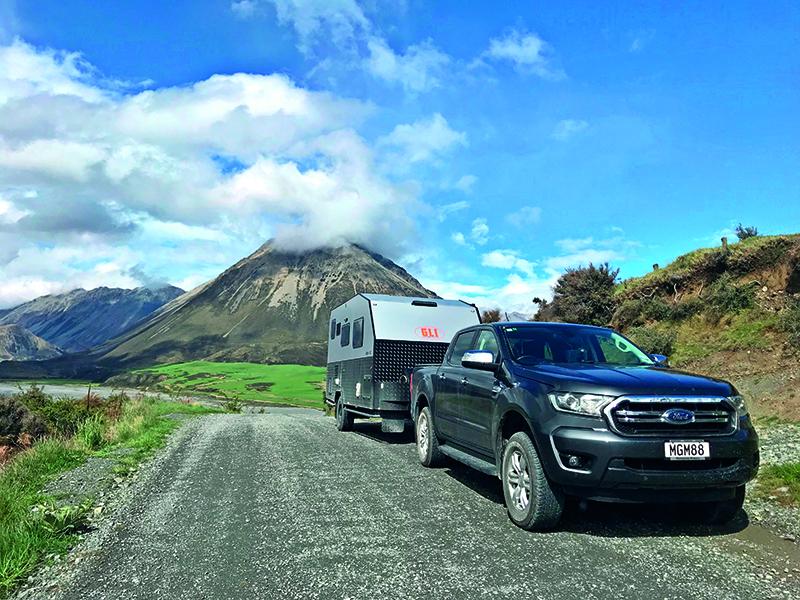Camping and 4WDs go together like summer and sun block. Or summer and late, balmy nights swapping stories around a campfire. Here 4x4Explorer’s Richard Soult offers his thoughts on how to get the most out of our great outdoors in your 4WD.
Because most of the 4WD vehicles on which our fantastic recreation is based are built tough to take on some of the world’s toughest and most inhospitable terrain we are luckier than most fellow outdoorspeople be they trampers, hunters or trail bike and MTB riders in that we can carry more overnighting gear further.
We can carry more and better equipment too, whether it is packed inside or on a rack on the roof outside.
This gives us ‘options’ which in terms of staying out overnight can be boiled down to:
1) Traditional tents.
2) the recent phenomenon of roof-top tents.
3) the increasingly popular fold up and outs swags.
4) and a sleeping platform inside the vehicle itself.
Traditional ground tents
A trad tent is good place to start – for no better reason than the range is huge – from small lightweight one-person hiking tents to multi-room family holiday tents, you can buy either from a specialist right through to our local Warehouse, guaranteeing you bang for your choice as well as bang for your buck.
This can make a tent a very cost-effective entry point for your first foray into overnighting under the stars with your 4WD.
A tent itself also takes up very little room in (or on) your truck, and if you are all set-up for the night but find you need to make an emergency dash to the closest chemist/supermarket/bottle store, you can still hop in your truck and go.
Roof-top tents
Roof-top tents are becoming increasingly popular everywhere. Where once, here in NZ, they were the preserve of serious Overlanders with highly modified vehicles, they are now commonly seen on rental cars – and I mean cars – not trucks!
The history of the roof-top tent is not clear but I’m sure they first gained popularity on the African continent where sleeping off the ground offers lots of advantages in an environment where the local fauna sees you as their next meal.
Roof-top tents have a solid base platform and a built-in mattress making them very comfortable.
They are relatively easy and quick to erect and pack away and you can fold them away with all your bedding inside, freeing up space in the vehicle.
You can also, with most on sale here, add an annex, which creates a separate enclosed room beneath the overhanging sleeping platform. These can be great to provide extra privacy and a sheltered area to change, shower, cook and live in.
Most RTTs are of a reasonable size and so offer you space to move around and a decent degree of privacy if you are camping in close quarters to others. Being away from the ground, also means that they are generally warmer in cold weather.
Let’s face it, too, they also look really cool, the main reason many owners (that would be Aucklanders in particular, Ed) leave them mounted on their work trucks year-round!
Great as RTTs are, they are not cheap. As with everything, you tend to get what you pay for. A good quality RTT will cost you in excess of $1500, although there are some available for around the $1000 mark.
If you have a friend who has one, ask if you could borrow it for an overnight trip to see how it works with your set-up.
Swags
Swags are an Australian invention and are now also gaining popularity here.
A swag is the historical Australian name for what was once literally a rolled up bedroll originally carried by a ‘swaggie’ (an itinerant farm worker who walked from job to job here and in Australis during the late 1800s to early 1900s) but what today is arguably better described as ‘like a ground-based roof-top tent.
Some have a built-in mattress and most have hooped poles providing a tunnel-type shelter, normally manufactured using polycotton canvas.
Some have a side access system with a large opening flap and most (seeing as how they have become something of an Australian institution) come complete with an insect net inside.
A swag, however, is not a tent and will have restricted headroom. They are really designed as a weatherproof place for you to sleep, nothing more.
That said, they are also very quick to set-up and take down and, as with a roof-top tent, you can store your bedding inside when packed away.
Being free standing, however, means you retain the use of your vehicle as well.
Swags come at various price points from around $200 to as much as $1000, and – as far as I see it anyway – the only real drawbacks are the limited headroom, large size when packed and the lack of any covered outdoor space.
In-Truck set-ups
Both our New Zealand and European 4x4Explorer vehicles have been configured so that we can have a double sleeping platform in the back.
Here, as detailed in a previous issue of the mag, I removed the back seats from the TP (Trusty Prado) and created a platform, the size of a double bed, beneath which we store all our equipment.
In Europe, when I was putting together our Mitsi Shogun/Pajero, I retained the back seats and created a simple system where I could slide a piece of wood forward, which rests on the reclined rear seats.
We have a set of black hessian curtains that we can use for privacy, though I must say at this point, that my partner, Andrea, really dislikes sleeping in the truck and refers to it as the “Coffin,” maybe on account of the curtains.
Advantages & disadvantages
I’m also not a huge fan. I don’t like the restricted head height and I find it difficult to get in and out of bed. When you reach a certain age and have calls that need to be attended to in the middle of the night, it can be quite an effort, especially if I’m in a sleeping bag.
That said, one of the advantages of sleeping in the truck is that it is very quick. All I need to do is unpack my sleeping bag and it’s ready. I really only sleep in the truck if I arrive somewhere much later than planned or if the ground is just too rocky to erect the tent... which has occurred a few times mainly up High Country Canterbury Valleys.
Other advantages are that the truck is totally weatherproof and you benefit from the vehicle’s sound insulation.
I have many Overlanding friends who sleep in their vehicles and are extremely happy with this option..
Conclusion
So there you have it, a brief examination of the overnighting options you have when you own a suitable 4WD. Which option you chose will be based on how you use your vehicle and how important various factors are to you. These could include speed of set-up and stowage, budget, number of people in the party, amount of use, space available, terrain, climate/season and comfort level required.
Whichever system you are using at the moment or are considering in the future, it should be based on what suits YOU best, rather than the latest trend or trends.
My choice!
In saying that, when my partner Andrea and I are away together we tend to use a tent, and when I’m away solo, I use a Darche swag, which I pitch under my Rhino Rack Batwing awning.
Combined with the Darche -12C Cold Mountain sleeping bag, I’m guaranteed a great night’s sleep winter or summer. And, as we all know, a good night’s sleep after a big day behind the wheel is priceless!






